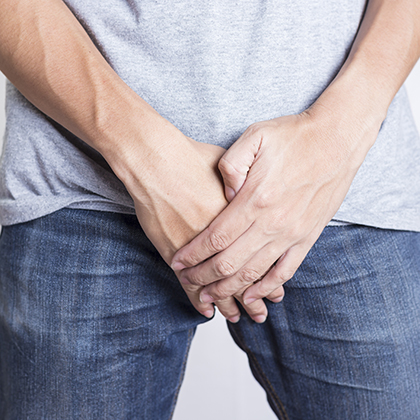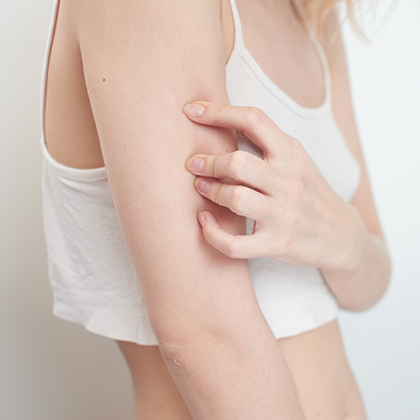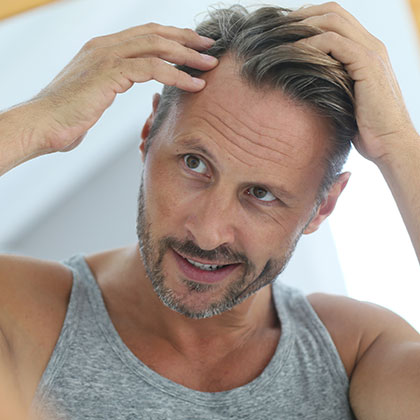
Head lice are very common in children and often affect the rest of the family too. Around the world they affect millions of children. Here in the UK the National Institute for Health and Care Excellence (NICE) suggests between four and 22 per cent of school children may be affected, most commonly in those aged four to 11 years old – though anyone of any age can get head lice (i).
A Belgian study has also found that head lice are significantly more common in children who have long hair, possibly because having long hair makes treatment more difficult (though this may also explain why head lice are thought to be more common in girls than boys) (ii). The study concludes, however, that children are more likely to get head lice when they spend time with other children – at school, for instance, or if they have several siblings – rather than those with physical characteristics such as long hair.
What are they exactly?
Head lice are tiny grey/brown insects with six legs and no wings that are the size of a pin head when hatched and the size of a sesame seed when fully grown. Nits, on the other hand, are the empty eggshells the lice leave behind when they hatch (they are yellow/white in colour and can easily be mistaken for dandruff).
-
First the female louse lays eggs close to the root of hairs, where the scalp keeps them warm. The eggs are tiny, which makes them difficult to see with the naked eye.
-
The lice hatch from their eggs after seven to 10 days, leaving the empty eggshells attached to the hairs. As the hairs they’re attached to grow, the nits become more noticeable.
-
After nine or 10 days the baby lice become fully grown. At this stage, they can spread to other heads, with the female adult lice starting to lay their own eggs. To stop head lice spreading they must be removed before they can start laying eggs (that is, within nine days of hatching).
Head lice are spread by head-to-head contact – they don’t jump from one head to another and they don’t fly. Away from a human head a louse can survive for a day or two, which means they can also be spread by sharing combs and hairbrushes. And it doesn’t matter how clean your child’s hair is, they can still become infected if their head comes into contact with the head of another child with an infestation (the longer the head-to-head contact, the more likely the lice will spread).
What are the symptoms?
It’s common to assume that an itchy scalp is a symptom of head lice. But this isn’t always the case. The itching itself is caused by an allergy to the saliva produced by lice when they bite, rather than the sensation of lice moving around in the hair. So, since some people aren’t allergic to the saliva their scalps may not itch and they may not realise they have a problem.
It can also take up to three months for the itching to start after becoming infested with lice. That can mean that a child can pass head lice on to others for some time before their parents become aware they have an infestation.
Some children may itch far more than others too, as some may have just a few lice and others may have many more. In the UK, the typical number of lice on one affected head is estimated at around 30, though some children may have more, up to 100 (in very severe cases there may be more than 1,000) (iii).
An itchy scalp isn’t always a sign of head lice, it can be caused by other things too, such as dandruff, eczema, seborrheic dermatitis (an inflammatory skin condition) or an allergy to hair products (allergic contact dermatitis)).
How can you spot them?
Being so small head lice can be difficult to detect, and the first you may know about it is when your child starts scratching their head (if they scratch at all, that is). Even when you look closely you may not see them. So, if you know there’s an outbreak of head lice at your child’s school it’s important to check for them very carefully.
The method that’s widely recommended to detect head lice is to use a special fine-toothed comb called a detection comb, which you can buy online or from pharmacies (these also remove head lice and nits).
Here are some steps you can follow:
-
Wash your child's hair with their usual shampoo. Rinse out the shampoo then apply plenty of conditioner – but don’t rinse it out yet. Comb through using a normal comb.
-
Once any tangles have been combed out use your detection comb to comb through the hair, making sure that the comb gets right into the roots (it should touch the scalp) and then draw it right down to the ends. Work around the head making sure that all parts of the hair and scalp have been combed. After each stroke, check the comb for lice and nits (you may need a magnifying glass to see them).
-
If you find any lice or nits, clean the comb before putting it back in the hair by wiping it on a tissue or rinsing it.
-
Once all parts of the head and hair have been combed, rinse the hair to remove the conditioner. Then comb through thoroughly again while the hair is still wet to check for any lice or nits you may have missed.
Repeat the entire process – which should take between five and 15 minutes, depending on the length and thickness of your child’s hair – regularly. If you do find any lice or nits, check and treat the rest of the family's hair too.
You can also use the detection combing method on dry hair, but while it may help you spot head lice or nits, it’s not thought to be effective as a treatment for getting rid of them.
Are there any complications?
The main complication of head lice is the anxiety and distress they can cause, not just in the children affected by them but their parents and other family members too. Besides this they rarely cause any medical problems. It is possible for a child to scratch so much they get a rash on their scalp, which can cause an infection – though this happens very occasionally.
Sometimes having head lice can also cause a rash on the back of the neck and behind the ears, which is the result of a hypersensitivity reaction to louse faeces. Head lice can occasionally cause sleep problems too, especially in those who experience continuous or severe itching.
How are head lice treated?
If you don’t treat head lice, they can persist for a long time – up to and more than a year in many cases. Using a detection comb regularly on wet hair is one of the main ways to treat head lice, as well as detect them. And while it can be quite laborious, wet combing is also a method that avoids the use of chemicals.
If you want to use the wet combing method, you should repeat the procedure on days three, six, nine, 12 and 15 to get rid of young lice before they become old enough to lay their own eggs. Comb the hair thoroughly each time for maximum effectiveness.
Meanwhile, lotion treatments that use insecticides can also get rid of head lice – these usually need to be used twice, but only use them if you are sure you have found at least one live louse. Normal shampoo and normal combing, however, aren’t effective against head lice.
Most insecticide treatments work by coating the lice and smothering them. These are thought to be effective if used correctly and if all affected people in your household are treated at the same time. They include:
Dimeticone 4% lotion/spray/gel
This is applied to dry hair twice, seven days apart, with the lotion left on the hair for at least eight hours (usually overnight) then washed off with shampoo and water. It’s suitable for all ages, for those with skin conditions and asthma and for women who are pregnant or breastfeeding. You can buy it over the counter at pharmacies, and the lotion is also available on prescription.
Dimeticone 92% spray
As this is a stronger insecticide than the 4% lotion, it’s considered more effective. However, it’s not suitable for everyone – pregnant or breastfeeding women should avoid it, and it shouldn’t be used in children younger than two years old. The spray is applied to dry hair and left on for eight hours, with the application repeated seven days later to make sure any lice that survived the first application are killed.
Isopropyl myristate and cyclomethicone
This solution only has to be left on for 10 minutes rather than overnight, but again it has to be applied a second time after seven days. It too isn’t suitable for everyone – you’re advised not to use it if you’re pregnant or breastfeeding, if you have a skin condition or if your child is younger than two years old.
Malathion 0.5% liquid
Unlike the previous insecticides, this works by poisoning the lice. It’s applied twice, seven days apart, with each application left on for at least 12 hours. There are some restrictions as to who can use it – it’s not suitable for children younger than six months old and while it can be used by pregnant women, it’s only advised to those who haven’t had success using wet combing or dimeticone 4%.
If you decide to use an insecticide treatment, make sure you have enough product to treat everyone in your household who’s affected, and follow the instructions on the label carefully, paying particular attention to how long you should leave the product on the hair and how often you should apply it. Then check the hair again as often as the instructions suggest.
Always read the label and ask a pharmacist about the product’s suitability if you’re treating young babies under the age of six months, pregnant women or a child or adult with asthma or allergies.
Meanwhile, some natural remedies – such as aromatherapy treatments that contain essential oils like tea tree, eucalyptus and lavender – are marketed as natural head lice treatments. There is currently, however, a lack of evidence that they work well, so they aren’t recommended by health experts. Wet combing, on the other hand, is a completely natural method that’s recommended by the NHS and other health experts.
To find out more about wet combing, visit the Community Hygiene Concern website or call 01908 561928.
Head lice facts – true or false?
There are many myths and truths about head lice – here are some of the main ones you should be aware of:
Head lice spread by jumping from one head to another
FALSE: Head lice are spread by direct head-to-head contact. They can sometimes be spread by sharing things such as hats, combs and pillows, but this is very unlikely. That’s because once they fall out of a human head, they don’t survive for long.
You can catch head lice from animals
FALSE: Head lice only affect humans, you can’t catch them from your family pets or any other animals.
Head lice can affect anyone of any age
TRUE: You don’t have to be a child to have head lice, as they like adult hair just as much as children’s and can be easily spread from one adult head to another. However, they seem to be a particular problem for school children aged four to 11.
Head lice prefer to live in clean hair
FALSE: Head lice don’t care if your hair is clean or dirty – so if you or your child has head lice, it has nothing to do with your personal hygiene. They can also live in all types of hair.
Head lice feed by biting the scalp and feeding on blood
TRUE: It may sound horrible, but that’s exactly what they do.
The best way to prevent head lice is to cut your child’s hair short
FALSE: While they may be slightly more common in children with long hair, head lice don’t really care if your hair is long or short. In fact, as they live close to the scalp they can survive on hair as short as 2mm in length.
You can treat head lice successfully without seeing your GP
TRUE: Once you’ve spotted any live head lice you can treat them yourself without seeing a doctor. You can get everything you need from high-street and online pharmacies, including detection combs and insecticide treatments. If you do detect any head lice, it’s important to treat them straight away (though don’t use insecticide treatments unless you’re sure you have found at least one live louse).
Head lice lotions and sprays protect against infestations
FALSE: Insecticide head lice treatments only treat infestations, they can’t prevent head lice. Lice repellent sprays are available, but there’s a lack of evidence that they work well. The best approach is to comb your child’s hair with a detection comb regularly – that way if they do get head lice, you’ll be able to find them as early as possible.
Children with head lice shouldn’t go to school
FALSE: There’s no need to keep your children away from school if they have head lice, but it’s a good idea to tell other parents about it, so they can look out for lice in their children too.
References:
-
Available online: https://cks.nice.org.uk/head-lice#!backgroundSub:3
-
Willems. S., Lapeere. H., Haedens. N., et al. (2005). The importance of socio-economic status and individual characteristics on the prevalence of head lice in schoolchildren. European Journal of Dermatology. 15(5), 387-392. Available online: https://www.ncbi.nlm.nih.gov/pubmed/16172050
-
Available online: https://patient.info/childrens-health/head-lice-and-nits
Related Posts
Disclaimer: The information presented by Nature's Best is for informational purposes only. It is based on scientific studies (human, animal, or in vitro), clinical experience, or traditional usage as cited in each article. The results reported may not necessarily occur in all individuals. Self-treatment is not recommended for life-threatening conditions that require medical treatment under a doctor's care. For many of the conditions discussed, treatment with prescription or over the counter medication is also available. Consult your doctor, practitioner, and/or pharmacist for any health problem and before using any supplements or before making any changes in prescribed medications.

Christine
Christine Morgan has been a freelance health and wellbeing journalist for almost 20 years, having written for numerous publications including the Daily Mirror, S Magazine, Top Sante, Healthy, Woman & Home, Zest, Allergy, Healthy Times and Pregnancy & Birth; she has also edited several titles such as Women’ Health, Shine’s Real Health & Beauty and All About Health.
View More



